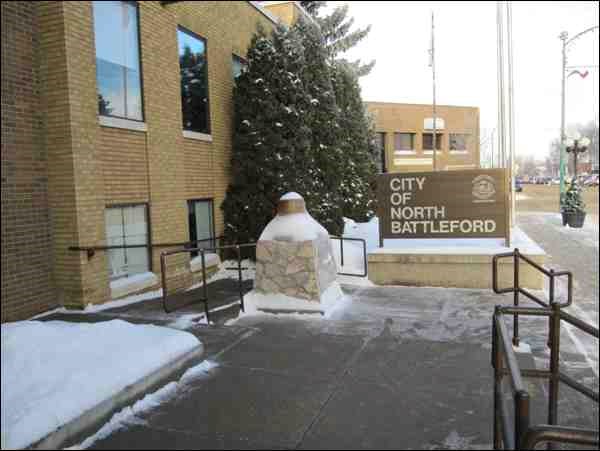There was good news about the budget of the Crime Prevention Through Environmental Design Committee at North Battleford city council Tuesday.
A total of $60,160 in the safety budget is being reallocated from several CPTED committee projects planned for 2018, because the projects do not require the full amount that was allocated.
Instead, they will go towards a trailer radar sign and a traffic detection system, both of which will help police in their investigative efforts.
According to a memo from City Planner Ryan Mackrell to council Tuesday, the money was initially going to go towards proposed projects such as formalizing neighbourhoods, Art Alley, community engagement and CPTED training.
But several initiatives planned for 2018 are not going ahead, while unexpected savings were found for other items.
An Art Alley project was pushed back to 2019 due to organizational changes at the downtown business improvement district. A proposed Civic Centre parking lot crime-reduction project used other resources. Purchase of mobile security cameras was postponed due to costs. The budget for CPTED training was not used in its entirety and money was saved when a fire pit was donated for Block Party promotions. More money was saved when Doug’s Paint Shoppe gave the city a discount on street murals.
With $60,160 freed up, the plan is to use $36,660 to buy a Ver-Mac trailer radar sign, a portable sign that automatically captures photos and video of speeding vehicles and their licence plates. Infractions have GPS and date stamps. The system is described as accurate within plus/minus one km/h. However, the City says this is not to be confused with “photo-radar” as there would not be tickets sent out in the mail.
The other $23,500 is to obtain a Miovision TrafficLink Detection Package, a video-based application to study pedestrian and vehicle traffic. A camera is placed at an intersection and the system communicates with existing traffic signals to move the traffic more effectively, but there are additional benefits.
“The cameras are multipurpose,” said City Manager Randy Patrick. “They do a lot of traffic work — some of the budgeting is coming out of the traffic signal budget — but they also have some other benefits that can be used for looking at traffic going out of the city. So if police wanted to see if there was a car that had left the city, they could go back in a very short period of time after that and see if that actually happened.”
Administration made clear these items are not going to be used as crime preventative measures, but rather as “investigative tools” to assist the RCMP and CSOs after the fact. One benefit would be the ability to track vehicles that are stolen.
There was considerable discussion about whether the purchase was the right move, given that the CPTED funds were not going directly to crime prevention measures.
But one councillor who was strongly in favour was Greg Lightfoot, who pointed to the benefits had this system been in use during the recent Amber Alert incident in the city in which a vehicle had been stolen.
“I think it would have been much easier, accessible,” said Lightfoot. “Maybe it would have made this incident much less of a worry for the community. Fortunately we had a very good outcome out of that, but it could have been much worse.”
There were some right-to-privacy concerns expressed at the meeting about the cameras. In the end, some additional language was tacked on to the resolution to ensure the cameras were subject to relevant privacy legislation.
The motion to reallocate the CPTED funds and purchase the two items was carried unanimously.



